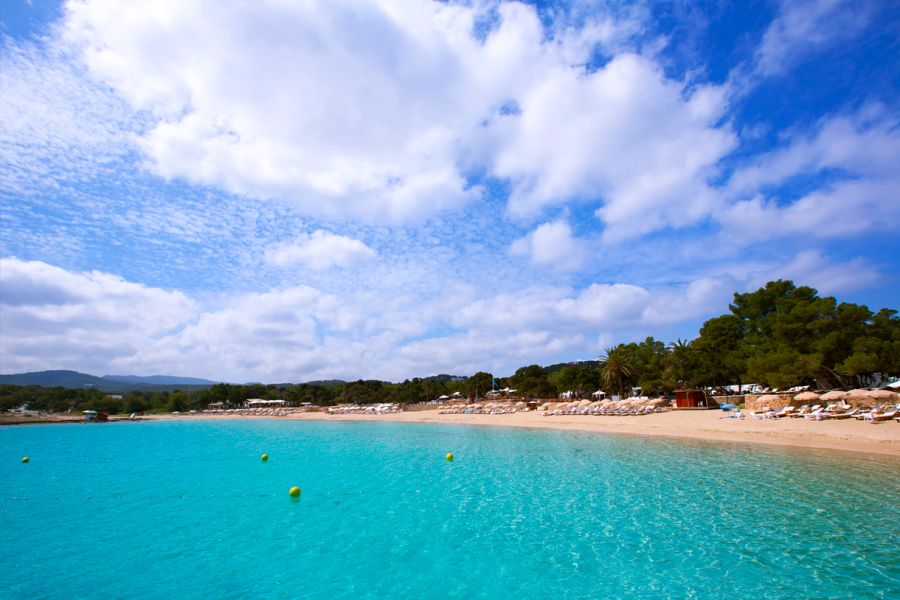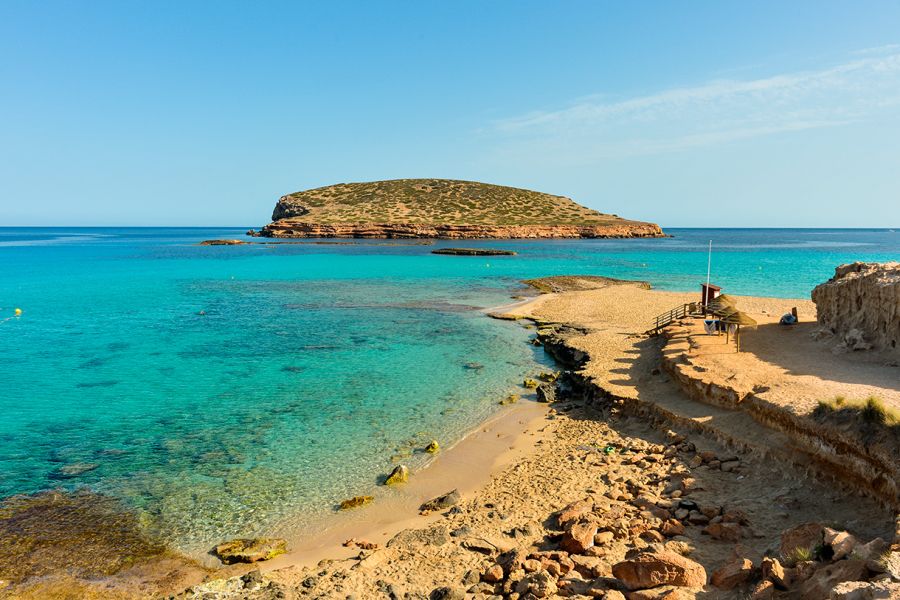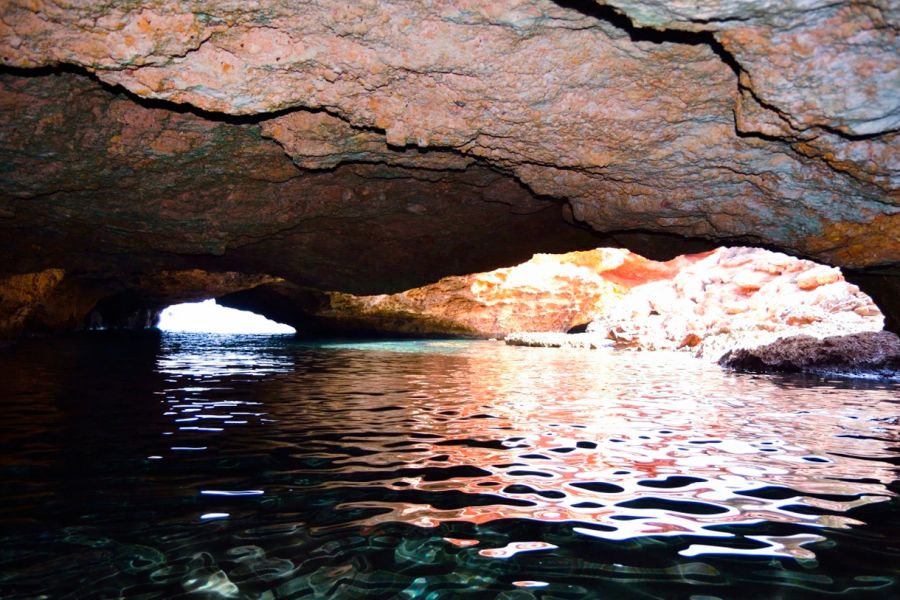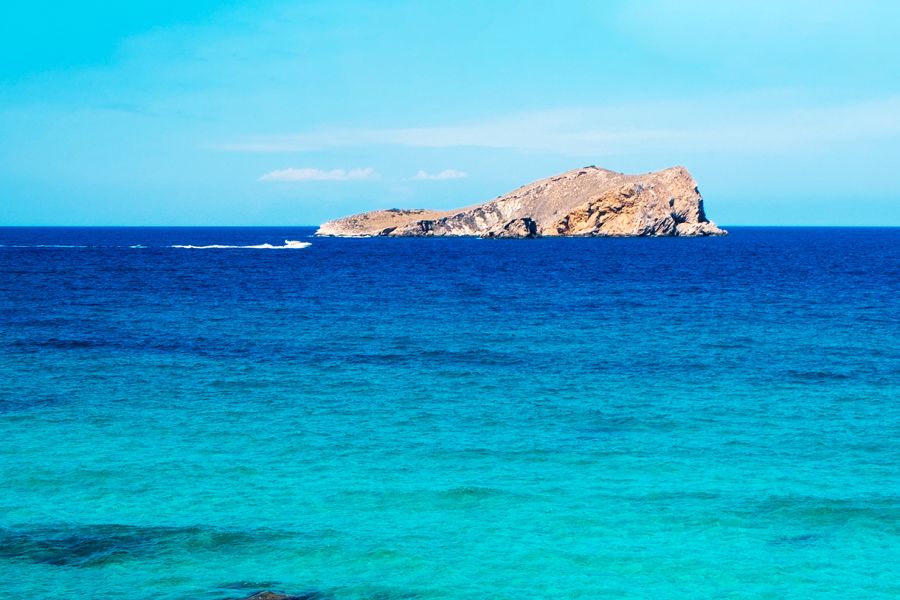This group of islands is located on the southwestern coast of Ibiza and the coordinates for the peak of Es Vedrá are 38°52’3.77”N 1°11’53.77”E
The island of Es Vedrá is found approximately ten nautical miles from Sant Antoni and its name comes from the Greek etymological root word πέτρα (petra), which means ‘stone’. To get to this huge rock, the voyage runs through the open sea to the west, past the islands of Sa Conillera and Es Bosc, and the turquoise-blue waters of Cala Conta.
This is Ibiza’s most mysterious and mystical island, where myths, stories and legends abound. Its imposing vertical walls that are almost 400 metres high are absolutely breathtaking. The sheer magnificence of its imposing figure will bring to mind a huge dragon or a colossal pyramid.
The limpid waters around Es Vedrà are ocean blue in colour as they're very deep. The underwater profile of its nearest coast goes down to 80 metres deep just a few dozen metres from this unusual islet, and in some cases, they seem to be an extension of the deep sea beds straight to the skies.
Sailing around this majestic islet is an experience that is simply awe inspiring thanks to its immensity and innately wild, inhospitable and rugged profile.
Not far from it is its little brother, the islet of Es Vedranell. Its distinctive horseshoe shape invites sailors to sail in and find a small bay that can serve as a shelter from the winds.
Very near this picturesque geological brotherhood is a reef that emerges to the surface. It's called Sa Bota d’Es Vedrà. Its solitary position in the middle of the sea is a hell for many unsuspecting sailors and their very worst nightmare for some of them. As the rocks peek out slightly above the surface of the sea, you can actually step onto this rocky outcropping.
One other thing you can't miss is heading to Cala d’Hort, and at its southermost end, sailing to a magical place popularly known as Atlantis but whose real name is Sa Pedrera. This place used to be a quarry for marés sandstone, a highly porous stone formed by compact sand and seawater that is very easy to work with, which boasts insulating properties that are superior to other construction materials and has been widely used since ancient times. The ravages left by extracting stone from the quarry are patently obvious in the form of cubes that form natural pools that are widely used by the island’s inhabitants and are very popular due to their great beauty.
Other locations
Stay up-to-date with what's new with us
Subscribe and leave us your email address to stay up-to-date with our news, what’s new and deals.






